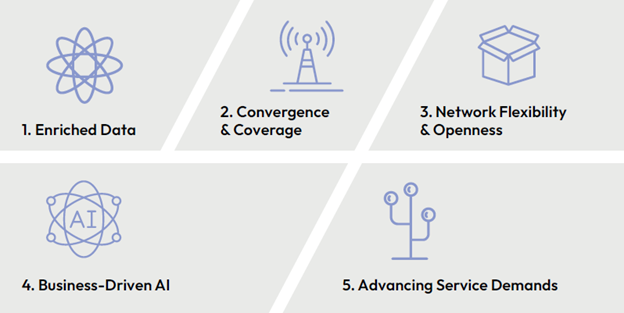When 5G first rolled out, the spotlight was on technical capabilities − cloud nativeness, scalability, and responsiveness. But as the dust settles, a new realization is emerging: charging systems have evolved from operational tools into strategic engines for monetization, differentiation, and growth.
Communications service providers (CSPs) are navigating a rapidly evolving landscape. Networks are more flexible, services more personalized, and customer expectations higher than ever. Amid this complexity, charging platforms are taking on a new role. Rather than just tracking usage, they’re enabling real-time, AI-powered, business-driven service innovation.
From afterthought to strategic asset
Historically, charging was treated as a backend function − important, but not central. That’s changing. Today’s charging systems must be hyper-adaptive and capable of supporting everything from satellite-enabled IoT to AI-driven digital twins. They also need to be fast, flexible, and intelligent, with the ability to handle real-time data, support dynamic pricing models, and integrate seamlessly with APIs and partner ecosystems.

Image: Factors combining to drive advanced monetization opportunities
Five forces reshaping monetization
Amdocs has identified five key industry drivers that are transforming how CSPs think about charging:
- Data explosion: As networks become more cloudified and software-defined, data lakes are growing − and with them, the complexity of managing them. With AI automating data ingestion and analysis, CSPs can now monetize predictive insights and optimize services in real-time.
- Ubiquitous connectivity: With the convergence of 5G, Wi-Fi, satellite, and fiber, dead zones are disappearing. This opens the door to new pricing models, like charging for occasional use of remote monitoring devices or premium satellite coverage in rural areas.
- Network flexibility: As multi-cloud and hybrid architectures, combined with AI, make networks more autonomous, it’s creating new monetization opportunities – especially as APIs become more available for both internal operations and external partnerships.
- AI-driven business models: From agentic AI assistants to edge-based AI workloads, CSPs are finding new ways to monetize AI infrastructure. Charging models are evolving to include new opportunities such as reserved capacity for AI-driven services, spot pricing, and B2B2X scenarios.
- Service complexity: As services become more diverse and time-to-market shrinks, charging must be integrated from the start. It’s no longer just about billing for data − it’s about enabling real-time, dynamic, context-aware monetization across a wider range of use cases.
Making the shift
To stay competitive, CSPs need charging engines that are scalable, modular, AI-native, business-friendly and integral to the service offering. They must support rapid experimentation, offer real-time data visibility, and be secure and compliant by design to satisfy local regulatory requirements for critical infrastructure. Ultimately, charging is no longer just about collecting revenue − it’s about creating value.
Want to dive deeper?
The full paper, “Network Charging as Strategic Advantage: Essentials for a Modern Monetization Engine in the GenAI Era,” explores these trends in detail and outlines the charging capabilities CSPs need to thrive. Read the full paper here.












